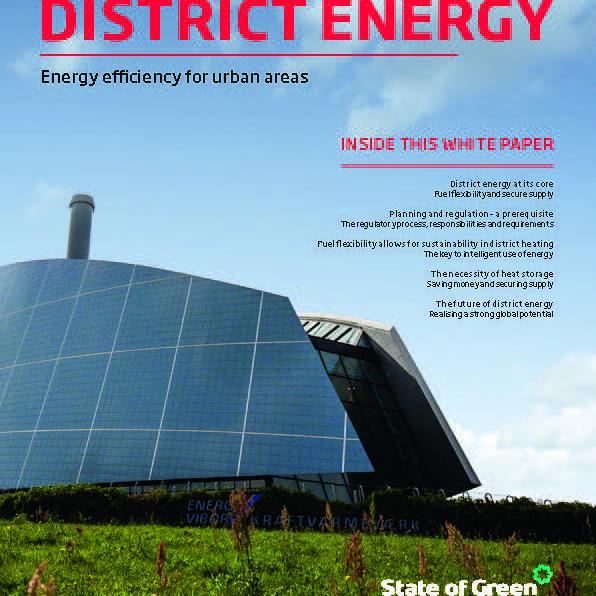District heating plays a key role in the Danish energy system
Denmark is one of the most energy-efficient countries in the world. The widespread use of district heating and combined heat and power is one of the primary reasons that energy efficiency has increased while carbon emissions have decreased in Denmark over the past several decades.
Today, around 64 pct. of all private Danish households are connected to district heating utilized for space heating and hot water combined. Denmark has six large central district-heating areas distributing a total heat production of approximately 67 petajoules (PJ) per year. The six areas are located around major cities and urban areas, in addition 400 smaller decentralized district heating areas with an annual heat production covering approximately 53 PJ are spread throughout the country.
The rise of district heating in Denmark
The first combined heat and power plant in Denmark was built in 1903 as a waste incineration plant, which made it possible to handle waste in a more sustainable way while providing electricity and heat (steam) to a new hospital. As such, the plant solved two problems at once.
During the 1920’s and 1930’s, collective district heating systems was developed based on waste heat from local electricity production. District heating also supplied some urban areas with heat and accounted for around 4 pct. of the Danish heat supply. From then on, and especially after the oil crisis in the 1970’s district heating from combined heat and power expanded rapidly.
At the time of the energy crisis in 1973-1974, energy consumption per capita had risen to a very high level. The oil crisis created an urgent need to save energy in order to reduce Denmark’s dependency on imported fuels and consumers’ expenses for heating. As a result, Denmark decided to expand the fuel-efficient combined heat and power system from large cities to medium and small-sized cities. In the late 1970’s, around 30 pct. of all homes in the larger Danish cities were heated by district heating systems.
In 2014 the production of district heating in Denmark amounted to 121,5 PJ with almost 50 pct. coming from renewable sources.
Joint publication on District Heating Experiences
The Danish Energy Agency has issued a publication on district heating, available in both English and Chinese. It includes a short history of district heating in Denmark, an overview of the regulatory framework and concrete cases. The publication is published in cooperation with State of Green and the Danish Board of District Heating and is a state of the art publication on the issue.
